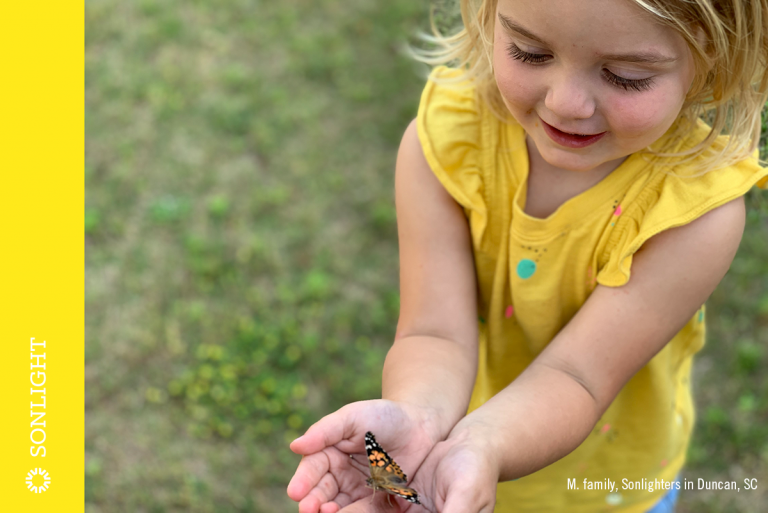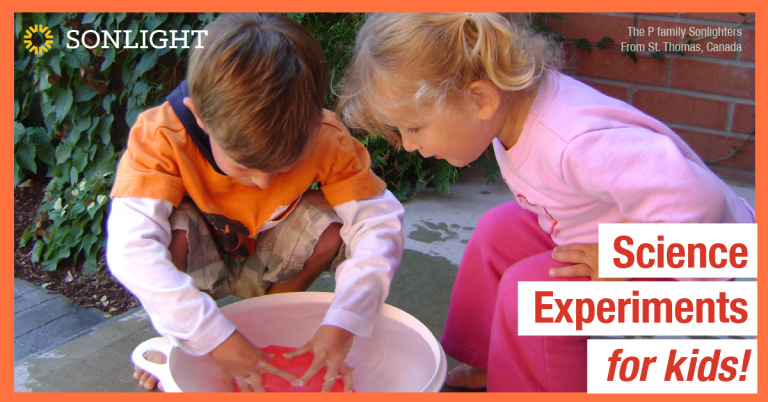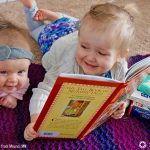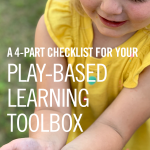
The other day, my five youngest children raided the chest of dress-up clothes, focusing on vests and flat woolen hats. Then they grabbed their tall farm boots, packed a small tea set in an old suitcase, and trekked the perimeter of our property. They were, it turns out, journeying to Calcutta— reliving the adventure of Momo as she searched for her prized dog in Daughter of the Mountains.
Today, they are trying to coax one of the horses in the neighboring field to follow them to Narnia, a la The Horse and His Boy. Who knows what will catch their imaginations tomorrow? It could be anything… but chances are good it will be something they discovered in a Sonlight book.
Play As a Learning Tool
There are multiple ways to process what you’ve learned. Writing a paper is a good one. So is making a video, creating an art project, retelling the information, or teaching someone else. The method most favored by my children over the years, though, has been reliving what they learned in active play.
Play is back in the news as an integral part of learning. Every day it seems a new report is published stating not just how valuable play is, but also how much it is lacking in modern education.
Classrooms, faced with testing deadlines and state-mandated scope and sequence charts, rarely have time for the slower pace of play-based learning and exploration. Homeschooling parents generally have a good understanding of how important play is simply from spending hour upon hour studying how their children learn best. Having a varied toolbox of educational tricks means tapping into multiple methods of learning, and play is one of the most simple and effective.
Setting the stage for play-based learning, as a Sonlight parent, doesn’t require an investment in expensive manipulatives or trips to teaching supply stores. A few essentials are all you need. Here's your four-part checklist:
1. Clothes for Dressing Up
Cast-off clothing, thrifted finds, costumes, and even sheets and blankets are essential elements in the dress up box. Your children will be well equipped when the urge to be William Tell from The Apple and the Arrow strikes or when you need to rise from slave to scientist like George Washington Carver. Nothing cements understanding—and fires curiosity— like stepping into the shoes of another person!
2. Household Goods for Play
Now, these can definitely be toy items—cute wooden toy plates and cups, little baskets made for carrying babies, that mini plastic camping set. But if you’re short on cash, it’s just as good to make a Goodwill trip and find some hand-me-down items to serve. Be creative! You never know what your child will imagine something to be, so if that flashlight is $1, it may just be worth throwing in the cart for later on.
3. Open-Ended Building Toys for Indoor Play
LEGO bricks are more than great distractions during the read-aloud hour. They’re also a wonderful way to re-create the Roman villa in Living Long Ago or the canoes in The Lewis & Clark Expedition. Log building sets, magnetic tiles, anything your kids can use to construct—they are all essential to play-based learning!
4. Natural Loose Parts for Outdoor Play
Whether you’re figuring out exactly what a one-room schoolhouse might have looked like in The Year of Miss Agnes or staging your favorite Greek Myths for Children, you’ll need to set the scene. We even strip pallets of their screws and nails, sand them down, and leave them free for kids to use as they need.
Cultivate a schedule that leaves plenty of unstructured time for play, have a few props on hand, and keep the ideas flowing with your Sonlight curriculum. Suddenly you’re watching the learning extend well past school hours as your kids engage in the ideas, events, and times they’ve been studying. You can’t plan that kind of lesson… but it’s every bit as valuable!
Kickstart your children's interest in science with structured activities. See complete kits here. Then set them free to explore with the loose parts in the supplies kit.








